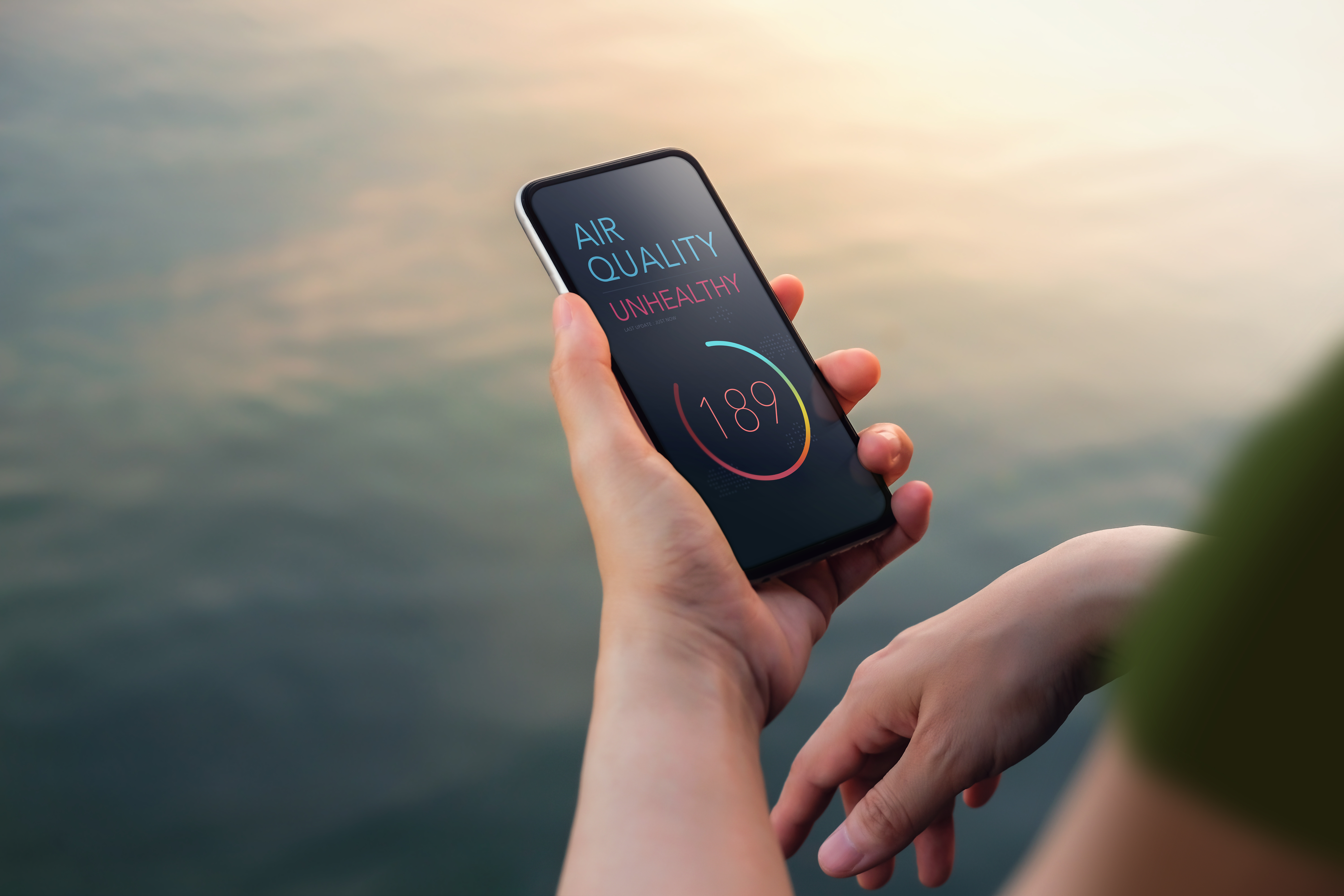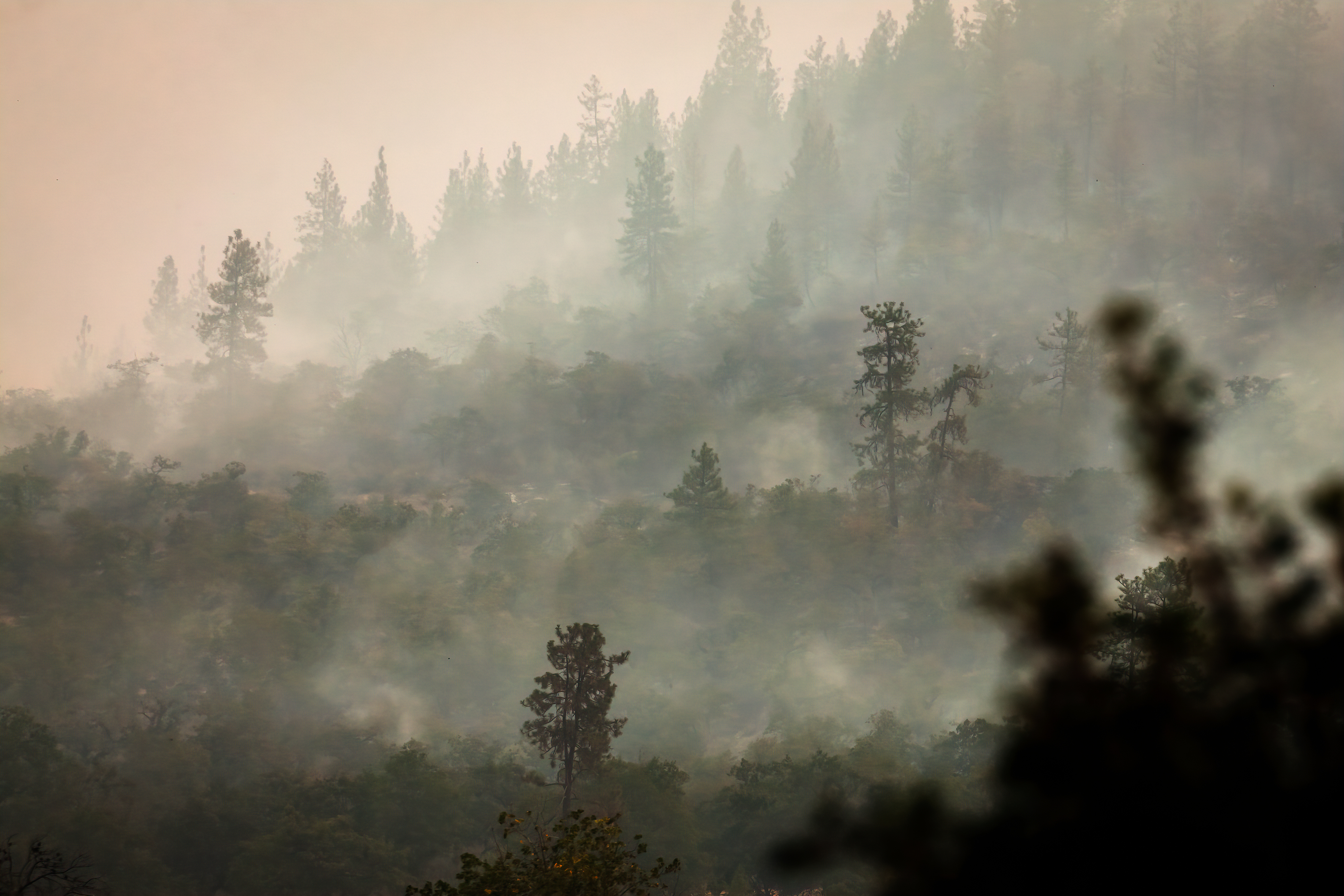While you may think of wildfires and other sources of air pollution as outdoor problems, these factors can impact our indoor air quality as well. This article explores the toll that deteriorating air quality takes on humans, especially those living in major cities. As with any healthy environment, effective ventilation is important. Panasonic's indoor air quality solutions can keep you breathing well in spite of outside pollutants.
Degrading air quality is a growing concern in the U.S., especially as climate change increases the frequency and intensity of wildfires.
Residents of New York, Washington, and Chicago awoke to plumes of orange smoke blanketing their skies from the drift of Canadian wildfires last summer. Meanwhile, Americans on the West Coast have observed smoke-darkened atmospheres for far longer. And people whose jobs are in outdoor settings bore the brunt of the poor air quality — mostly those in blue-collar industries (like construction) and gig workers (like dog walkers or delivery drivers).
In 2024 alone, a quarter of the U.S. population will be exposed to air deemed unhealthy by the Environmental Protection Agency (EPA), according to a new analysis from environmental research group First Street. Those impacts are expected to grow, and about half of all Americans will be exposed to “Red Days,” or days of unhealthy air quality, in the 2050s, the report said.
That increase in pollution will cost both companies and their employees dearly — with hundreds of billions of dollars of pay lost annually across the workforce if unmitigated.
Quantifying the cost of bad air
Big air pollutants are ozone (O3) and particulate matter 2.5 (PM2.5). PM2.5 is the primary pollutant in wildfire smoke, and it’s so tiny it can travel into the heart and lungs, causing higher risks of heart attacks, lung cancer, and strokes.
In a 2022 analysis, economists forecast that for every microgram per cubic meter of air (µg/m3) increase in PM2.5, the U.S. labor market will lose an additional $123 in pay. The cost burden results from lost days of work and lower productivity, which not only cut into the earnings of employees but also the companies they work for. Employers lose, too, when workers are unproductive, ill, and have to take more sick days.
First Street told Quartz that PM2.5 pollution hit a low in 2016 before rising almost 20% to a new high of almost 20 µg/m3 five years later. The research group projects the average concentration of PM2.5 in the air across the country to rise 8% by 2024. The EPA says it’s unhealthy to be exposed to more than 9 µg/m3.
Quartz analyzed the data to forecast just how costly that added pollution will be to U.S. job-holders. If PM2.5 increases as projected by First Street, the U.S. labor force would lose $334.1 billion in 2054 alone.
That’s more than double the loss workers already suffer every year as a direct result of bad air quality — $125 billion, as of the most recent estimates.
“Understanding the likelihood and persistence of poor air quality exposure is important due to the well documented impacts on health outdoor labor productivity, and the nuisance of smoke impacting daily routines,” Jeremy Porter, First Street’s head of climate implications research, said in the group’s report.“We are just starting to see the beginnings of the impact this hazard will have on our daily lives and the larger economy moving forward.”
Companies across the globe already lose more than a billion work days every year due to air pollution, and that number could more than triple to 3.8 billion days by 2060. Firms in cities with high levels of pollution also find it more difficult to attract top talent, which has negative implications for their profitability and growth capacities.
The costs of poor air quality will not be incurred evenly. In the western U.S., PM2.5 pollution could increase as much as 50%, First Street’s report said. Meanwhile, other cities such as Atlanta could deal more with 03 than PM2.5.
U.S. wildfires and pollution, by the numbers
The pollution from wildfires in recent years has already started to offset the positive impacts of clean air regulations in the U.S., according to First Street.
“The statistical signals are clear. We are seeing rapid increases in air pollutants after decades of legislation to reduce pollution,” First Street CEO Matthew Eby said in a statement. “The major concern moving forward is that climate is much harder to regulate than industry.”
🔥 61,410: Wildfires that occurred in the U.S. on average every year between 2013 and 2022, according to government data
💥 30%: How much wildfires are expected to increase by 2030
✂️ $125 billion: Average annual pay losses U.S. workers incur from bad air quality, according to a working paper from the National Bureau of Economics Research (NBER)
🪓 $209 billion: Additional loss in pay that will be suffered by the American labor force in 2054, calculated by Quartz using the most recent pollution data from the EPA, figures from the NBER, and estimates from First Street
💼 1.2 billion: Number of workdays lost globally due to air pollution every year
👷♀️ 83 million: Number of people who will be exposed to at least one “Red Day” in 2024, or about a quarter of Americans. Companies in the western U.S. and those that rely on employees who work outside will be most impacted.
🆘 51%: Share of U.S. residents who will be exposed to unhealthy air in 2054
This article was written by Laura Bratton from Quartz and was legally licensed through the DiveMarketplace by Industry Dive. Please direct all licensing questions to legal@industrydive.com.





